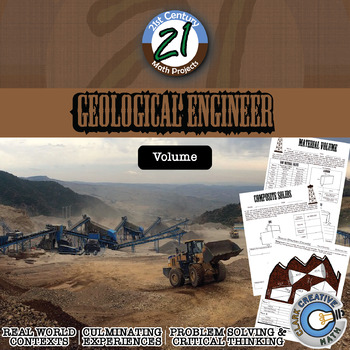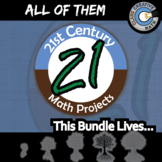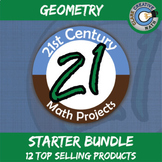Geological Engineer -- Mining Volume - 21st Century Math Project
- Zip
- Google Apps™

What educators are saying
Also included in
- This is a selection of my Volume & Surface Area resources all in a money saving Essential Bundle! You save significant money and time versus purchasing these separately!Essential Bundles are designed to give you everything you need to rock your unit. Warmups, Notes, Activities, Games, Exit TickePrice $35.00Original Price $101.00Save $66.00
- The project is the core of what I have built my classroom around. Scaffolding learners to real world projects. This bundle includes the 105+ math projects I have written. This is over 2,700 pages of content.21st Century Math Projects each scaffold through an authentic context and math skill buildingPrice $395.00Original Price $564.00Save $169.00
- 12 of my best selling projects/units all in an organized money saving bundle! These engaging, student/teacher approved math projects that provide rigor, relevance, and cross-curricular content altogether. Check out the preview to see the alignment to Common Core Standards! I have each of these pPrice $45.00Original Price $61.00Save $16.00
Description
All minerals and metals are not created equal. Geological engineers use mathematical modeling to estimate the amount of materials underground. Through careful analysis and decision making, they decide where to dig and how to extract the raw material in the safest way for the environment.
Bring volume to life in this 21st Century Math Project. Although mineral deposits are never in the shape of actual geometric figures, the concept is the same.
In this product you will receive a 23 page PDF which includes: 2 assignments, 1 project and necessary extras. ***THIS PRODUCT HAS BEEN UPDATED WITH A GOOGLE SLIDES INTERACTIVE VERSION INCLUDED. REDOWNLOAD IF YOU HAVE IT ALREADY***
- In “Material Volume” students use authentic density and costs of raw materials to solve problems that involve volumes of geometric shapes. Let students calculate the volume, the weight and cost of these “materials” to determine the most valuable.
-- In “Composite Solids” students will be introduced to composite figures under the same premise as the first one.
-- In “Geological Engineer” students look at four different fictional “sites”. I have included four sites for students to calculate and measure in the same way they have in the previous assignments. The student’s goal is to prioritize the sites based on the cost, profit and length of time it will take to complete the project. The volume and value answers will be the same, but prioritizing will vary.
You may be interested in the following discounted bundles. SAVE $$$!
•21st Century Math Projects -- All the Projects
•Geometry Projects Starter Bundle
Need an Entire Curriculum?
•21st Century Geometry –- the Entire Curriculum
•21st Century Pre-Algebra –- the Entire Curriculum
For more tips, tricks and ideas check out the Clark Creative Education Blog
And join our community where I post ideas, anecdotes, elaborations & every once in a while I pass out TPT gift cards! And jokes! I do jokes too!








